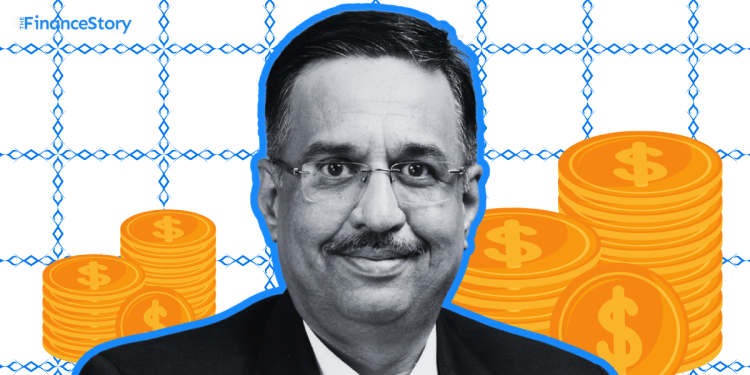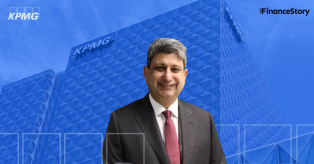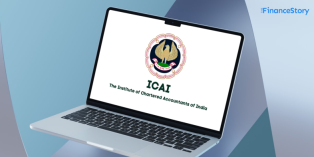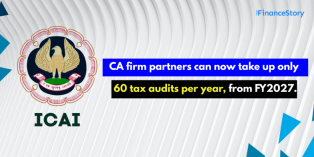- Kirtane & Pandit, with 900 professionals and 30 partners, is one of India’s leading CA firms.
- In 2004, Milind Limaye was invited by Mr. Ravi Pandit, the senior-most partner at Kirtane & Pandit, to join the firm.
- Since then, he has played a pivotal role in its expansion heading Risk Advisory at the firm.
- Here is what Kirtane & Pandit focussed on in 2024 and their goals for 2025!
Tell us about Kirtane & Pandit.
Kirtane & Pandit is a full-service accounting, auditing, and consulting firm.
We offer assurance, accounting, and advisory services. Our firm is structured functionally, with risk advisory being a key area spanning all seven offices.
We’ve been around for 68 years, so it’s a very significant feat for us.
Over time, we expanded into multiple segments. But what sets Kirtane & Pandit apart is our long-term vision of institution-building.
For instance, we started IT consulting in the early ’90s, which eventually became KPIT Technologies (generating over $500 Mn in revenue!).
Similarly, ESOP consulting started within Kirtane & Pandit but later evolved into ESOP Direct, now one of India’s largest ESOP consulting firms.
Any activity that grows beyond a certain threshold is spun off into a separate consulting company.
What has been your revenue growth rate?
We’ve maintained a steady 20-30% growth rate annually.
We’re at that stage now—ensuring steady growth without drastic course corrections.
Which service lines have seen the most growth at your firm?
Audit Focus in the ’80s and ’90s: Initially, the primary focus was on audits, which continue to be the largest revenue contributor today.
While audit remains central, other service lines have seen significant growth, mainly Forensic and Investigation Audits.
The forensic practice, once a small part of risk advisory, has now grown into a separate department with its leadership team.
Surge in corporate forensic assignments due to stricter whistleblower regulations.
Also read: Compliance services 400% growth: The most in-demand service line at this CA Firm”
ESG is a big focus for Kirtane & Pandit?
Yes ESG is a big focus and we have a separate consulting arm as well.
Why? ESG services require specialists—people with deep domain knowledge in sustainability, environmental science, and governance.
We didn’t want to restrict leadership opportunities for such experts just because they weren’t CAs.
Also, let’s be honest—people still tend to see CA firms as focused on audits and taxation. If we told clients we were handling ESG, they might hesitate.
So, by creating a separate entity with a broader mix of professionals, we ensure credibility and attract the right talent.
Kirtane & Pandit’s talent acquisition strategy?
There’s a clear shortage of expertise, and younger professionals don’t seem eager to enter these fields. It’s a common concern across firms.
How can CA firms attract and retain young talent? We launched a structured hiring initiative called Chrysalis.
- Engaging Early: Start engaging with potential candidates in their second year of articles, highlighting career opportunities at Kirtane & Pandit.
- Structured Development: For those who take up the challenge, provide leadership training, soft skills, and a clear career path.
- Career Growth: Guide professionals as they progress from assistant managers to senior managers, directors, and eventually partners.
- Empowering Professionals: Focus on helping young professionals understand they are profit centers, not cost centers.
And it’s working—we’ve successfully retained many article students who are now key team members across locations.
India saw a record number of IPOs in 2024. What does this mean for your firm?
Yes, the IPO boom has created significant opportunities for us. We provide companies – IPO readiness advisory.
Many companies looking to go public lack structured internal audits or proper risk management frameworks.
That’s where we come in—helping them streamline processes, improve governance, and ensure smooth IPO execution.
It’s also a long-term engagement. These projects last over 12 months, providing sustained revenue streams.
Also read: Singhi & Co.: Navigating growth, IPO Boom, NFRA
How can small firms shift from traditional practices to modern service areas?
Established firms like ours already have strong footholds in traditional services. This is a red ocean.
But emerging fields are wide open:
- AI-based consulting
- ESG
Younger professionals, being tech-savvy, can adapt quickly and build expertise in these new areas. This is a blue ocean for young professionals.
Money is in the niche!
Many Big 4 professionals are quitting to start their own CA firms. Does it increase competition for you?
Not at all. It’s an opportunity.
Some of our former interns innovatively started their practice. They approached manufacturing plants and offered hands-on assistance in implementing internal audit recommendations.
Over three years, they built a strong client base of 20+ MNC plants.
Did this disrupt my practice? No. They saw a gap in the market and seized it. The key is innovation.
What service lines will you focus on in 2025?
Many believe AI will disrupt CA practices, but we see it as an opportunity.
Over the past few months, we’ve been analyzing how AI might impact our industry and how we can turn those disruptions into advantages.
But one thing is clear: rather than resisting change, we intend to embrace it and evolve.
FAQ
How to improve client acquisition strategies at CA firms?
By focusing on value-driven services and adapting to market needs.
For example, Kirtane & Pandit has specialized in services like IPO readiness advisory, which has been in high demand.
Additionally, young professionals can leverage new technologies and adapt quickly to modern service areas like AI-based consulting.
How do CA firms ensure confidentiality and data security?
Firms must adopt best practices such as implementing strict data security protocols, using encrypted communication channels, and ensuring compliance with industry regulations such as GDPR or India’s data privacy laws.
Regular training on data protection for staff and investing in secure IT infrastructure are also essential measures.
What are the key challenges faced by CA firms in 2025?
The integration of artificial intelligence (AI) and automation into accounting processes presents both opportunities and challenges.
While these technologies can enhance efficiency, they also require substantial investment and adaptation.
Protecting sensitive client information against cyber threats is also increasingly complex.














